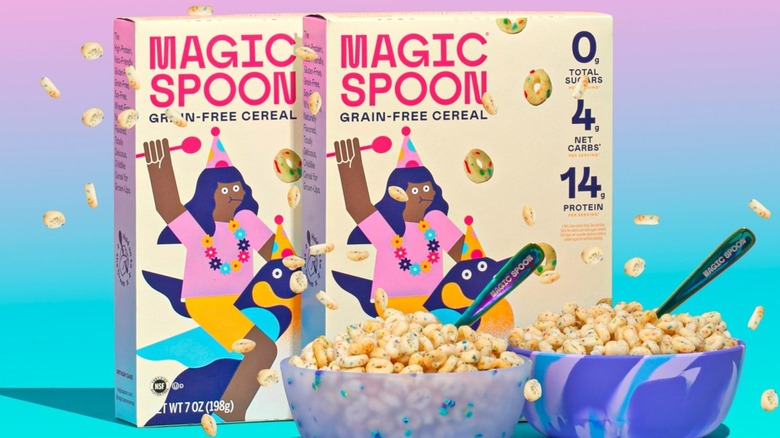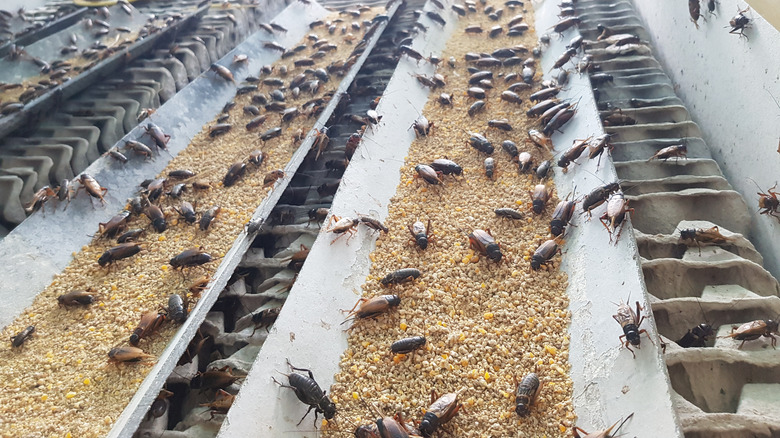The Unexpected Food Magic Spoon's Creators Made Before Cereal
With fun flavors and candy-colored boxes that beg to be picked up off the shelf, keto cereal newcomer Magic Spoon is likely to appeal as much to kids as to health-conscious grown-ups (via the company's website). Inventive flavors include cinnamon roll, maple waffle, and blueberry muffin, as well as cereal-aisle classics like cocoa, peanut butter, frosted, and even rainbow-colored fruity rings that are a dead ringer for Fruit Loops (via Magic Spoon). Fruity, the gluten-free Fruit Loops dupe, even features a giant brightly colored bird on the box. The ring-shaped cereals share a shape with Fruit Loops and Cheerios, but when it comes to their composition, the similarities stop there.
Magic Spoon creators Gabi Lewis and Greg Sewitz relied on outside-the-box ingredients for this project just like they did with their last project, protein bars (via Forbes). Besides having few ingredients, Magic Spoon cereals are gluten-free, artificial colorant-free, and high in protein. According to Magic Spoon, each serving packs 13-14 grams without milk. Though the cereal may not be the "perfect protein" that eggs are, add a half-cup of milk and you've got more protein in your bowl than two eggs. According to the USDA, how much protein an egg has varies up to 2 grams by size, but even a jumbo egg contains just under 8 grams.
Now think about one of the absolute last things you'd want to see in the cereal aisle (or the egg cooler for that matter). Then imagine that thing in your bowl.
Not-so-creepy crawlies?
As we said, Magic Spoon's Gabi Lewis and Greg Sewitz are good at flexing their creative muscles when it comes to finding protein sources for their foods — the company gets its super-powered protein from whey — milk protein that's a byproduct of cheese making (via Mayo Clinic). But as Forbes notes, a few years back the partners and Brown University graduates were using quite a different source to fuel their protein bars — crickets!
Lewis and Sewitz weren't the first to explore cricket protein (what's up cricket flour). Because crickets require so little space and resources to farm (so to speak), environmental advocates have long called for the introduction of more cricket-based protein as a way to offset the environmental impact of the meat industry (via NBC News). While the average consumer might still squirm at the thought of cooking with bugs, cricket-fueled protein brand EXO landed Lewis and Sewitz on Forbes' coveted 30 Under 30 list in 2015. Their goal was to create a sustainable protein bar made without the unhealthful mystery ingredients that clog most mass market bars. Kind of a high bar, but apparently they felt they'd met it, as they sold the company before moving on to their cheerfully-packaged gluten-free cereals (thankfully, leaving the crickets behind).

